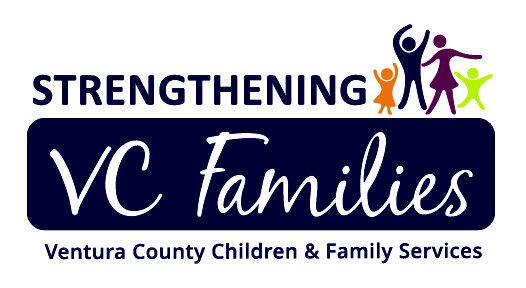
The exploitation of children for commercial purposes occurs when someone purchases, exchanges, or sells sexual services with an individual under 18 years old. Our community's young people are at risk from these predators, but our Human Trafficking Response Team is dedicated to combating child trafficking in Ventura County.
What does the Human Trafficking Response Team do?
The Human Trafficking Response Team offers aid to social workers in their efforts to recognize and provide aid to children and youth within the child welfare system who are victims of or at high risk of commercial sexual exploitation. Additionally, the team collaborates with various stakeholders such as agencies, non-profits, law enforcement, and other partners to establish a comprehensive response network to combat child trafficking.
We’re here to assist you in understanding the risks, indicators, and support resources necessary to combat child trafficking in our community.
Who are victims of child trafficking?
All children, from any culture and socioeconomic background are vulnerable to commercial sexual exploitation and child trafficking.
Who are perpetrators of child trafficking?
- Family members
- Significant others such as friends, boyfriends, or girlfriends
- Trusted adults
- Predators who prey on vulnerable youth
Where does child trafficking occur?
Child trafficking occurs in major cities and small towns, including Ventura County.
Who are at particular risk of being trafficked?
- Runaway and homeless youth
- Children and youth in out-of-home care
- Children that have suffered or experienced abuse*
- Children and youth in poverty*
- Children and youth of parents that abuse drugs*
How can educators identify the signs of child trafficking?
- The child is homeless, has run away, or is involved in the child welfare or juvenile justice systems
- Frequently absent for no given reason
- Shows visible signs of physical and emotional abuse
- Frequently goes on “vacation”
- Shows signs of malnourishment and sleep deprivation
- Responses to questions come off well-rehearsed
- Boyfriend or girlfriend is visibly older
- Promiscuity and sexual references occur uncharacteristically

What resources are available to educate the public about child trafficking?
- Department of Homeland Security Blue Campaign
- National Human Trafficking Resource Center
- Shared Hope International
- The National Center for Missing and Exploited Children
- Interface Children and Family Services
- Forever Found
How to report child trafficking?
- For immediate emergencies, call 9-1-1
- Ventura County Child and Elder Abuse Reporting Hotline: 805-654-3200
- National Human Trafficking Hotline: 888-373-7888
Community-Based Organizations
The Human Trafficking Response Team works closely in partnership with the following community-based organizations:
- Interface Children and Family Services
- Coalition for Family Harmony
- Forever Found
- Court Appointed Special Advocates (CASA of Ventura Co.)
- Casa Pacifica
For additional information contact the READY Program at 805-654-3469.

Become a Resource Family
Often times, children and youth who have escaped their trafficking situation are vulnerable to returning to their exploiter, for a variety of reasons; such as financial or substance abuse dependency, emotional attachment, or fear.
These children and youth may need resource families who will welcome them into a safe and stable home to support them as they heal from the trauma of their trafficking situation.
Resource families provide our youth and children with encouragement, support, motivation, and most importantly love.
Are you interested in loving and supporting Ventura County’s most vulnerable youth?

Report
For Immediate Emergencies: call 9-1-1
Ventura County Child and Elder Abuse Hotline: 805-654-3200
National Human Trafficking Hotline: 888-373-7888
TO MAKE A REPORT CONTACT OUR LOCAL HOTLINE: (805) 654-3200
More Information
 Online Enticement: www.missingkids.org/theissues/onlineenticement
Online Enticement: www.missingkids.org/theissues/onlineenticement
This involves any individual who communicates with a minor via the internet with the intent of committing a crime of sexual exploitation or abduction. This term can involve any of the following criminal acts:
- Sextortion – where a child is groomed to provide sexually explicit images and carry out a face-to-face sexual encounter
- Engaging in online sexual conversations
- Selling and/or trading minor’s sexually explicit images
The following act can occur on a number of media platforms including:
- All types of social media
- Messaging Apps
- Gaming platforms
What to look out for if you think your child is being enticed online:
- Engaging in sexual conversation/role playing as a grooming method, rather than a goal
- Asking the child for sexually explicit images and vice versa
- Developing a rapport through online compliments, likes and shared interests
- Sending or offering personal explicit images
- Lying about their age – often pretending to be younger
- Offering incentives including:
- Money/food
- Alcohol/drugs
- Hotel accommodations/transportation
Child Trafficking Response Unit 2018: Harm Reduction Information
The Harm reduction model was put into place to reduce the overall impact on dangerous/risky behavior over a period of time as opposed to the immediate elimination of those behaviors. The use of this model helps build safety and identifies the support network available to a young person who has been exploited.
“Utilizing a harm reduction approach This creates a tension with the acknowledges that change is helping professions—social workers, difficult, and that it may take a mental health clinicians, and period of time before a youth is probation officers, among others— willing or able to leave an exploitive whose objective is to protect and situation.”
– Child Trafficking Response Unit

The Harm Reduction Model addresses the following risky behavior factors often present in exploitive situations:
- Limited resources
- Unsafe relationships
- Substance use
- Risky sexual encounters
- Running away
*Note: The focus is placed on the above factors as opposed to focusing on the exclusively on the exploitation itself.
“Harm reduction is essentially a language that programs and providers must learn to speak in order for every aspect of youth engagement to be rooted in its principles.”
– Child Trafficking Response Unit
When youth are in imminent danger they may be forceably removed from the situation – Here are a few ways to use the harm reduction approach during this process:
- Have open honest conversations with regards to why they are being moved, this allows them to feel part of the decision process eliminating the threat of feeling forced into doing it.
- Ensure systems of care so that the youth doesn’t feel deprived of the needs the prior exploitation was fulfilling.
- Recognition and affirmation are key even when there is the slightest positive step forward.
- Redefine success but rather allow the youth to give you their definition of what that looks like.
“Harm reduction assists in building up a young person’s self-sufficiency and empowers them to be the primary practitioners of their own life.” – Child Trafficking Response Unit
There are three factors that are essential for better engagement with youth:
- Training
- Practitioners need direct support, coaching and guidance from their superiors to effectively employ this strategy
- Learning
- There must be a consistent approach across disciplines to ensure better engagement with youth and work against factors that may cause the youth to further retreat into their exploitive situations and disengage from services.
- Discussion
- Key stakeholders will be provided with harm reduction materials to be disseminated by steering committees who will be responsible for encouraging the development of harm reduction policies and procedures within interagency protocols.
Below are samples of practical strategies from subject matter experts on how their agency has adopted and employed the harm reduction strategy to be used as a guide on how to implement the strategy within their specific roles:

Classified as any child under the age of 18 who is missing or has run away on their own accord. This population of minors is extremely vulnerable and often become homelessness. The most common risk factors for runaway minors include the following:
- Prior missing incidents
- Drug/ Alcohol abuse
- Mental Illness including suicidal thoughts and self-harm
- Child sex trafficking
- Unattended medical conditions including special needs and unplanned pregnancies
- Gang involvement
- Online Enticement
The community can help reduce endangered runaways by:
- Become a partner that provides resources and education to help protect families and minors
- Support victims and their families by offering:
- Counseling
- Interventions
- Mental health services
- Support groups
- Raise awareness by:
- Visiting website with missing child posters
- Signing up for missing child alerts with organizations like The Adam Program
- National Center for Missing & Exploited Children
- Downloadable PDF: Autism Wandering Tips
Misinformation is dangerous, and in the age of the internet and social media, it can spread fast! When it comes to child trafficking, it’s important to know and share the FACTS. Help us squash the myths and stop child trafficking in Ventura County.
Myth: Child trafficking always involves kidnapping and/or violence. Fact: Child trafficking does not always involve kidnapping or violence. In fact, kidnapping is rare. Many human traffickers employ psychological means such as manipulation, trickery or threats to coerce victims into providing commercial sex or exploitative labor.
Myth: Traffickers target victims they don’t know. Fact: Victims and survivors have been trafficked and abused by people they know and trust such as a neighbor, teacher, coach, mentor, youth leader or even family members, such as a parent, sibling, grandparent, aunt, or uncle.
Myth: Social media and tabloid stories about sex trafficking (including fabrication) help to raise awareness. Fact: Sensationalizing stories is dangerous as it spreads misinformation and encourages misidentification.
Myth: Only girls are victims and survivors of sex trafficking. Fact: Boys are also victims and survivors of sex trafficking, and those that identify as LGBTQ are seen as particularly vulnerable.
Myth: Children in active trafficking situations always want help getting out. Fact: There are many reasons why victims may not seek help. In some instances, victims lack the ability to physically get out—such as transportation or a safe place to live. Others are ashamed or afraid for their safety. Some victims have been so effectively manipulated that they do not identify as being controlled by another person.
Myth: Child trafficking only happens overseas. Fact: Child trafficking occurs in major cities and small towns around the world, including Ventura County.
Myth: Trafficked minors are always held captive against their will (e.g., duct taped in a basement). Fact: Victims are very rarely held physically against their will. Most commonly, they are controlled mentally and emotionally.
Myth: Human trafficking only happens in person. Fact: According to THORN, more than 70% of sex trafficking happens online. Predators often target minors on social media, chat rooms, and gaming websites (Common Sense Media). These predators will sometimes attempt to seduce vulnerable adolescents by appearing caring and considerate, pose as other teens in an attempt to obtain sexual material, and find public photos of minors online to spread around and then target them.
Myth: Child trafficking only happens in illegal or underground industries. Fact: Child trafficking can and does occur in industries such as catering and restaurants, garment and textiles, agriculture or horticulture, construction, cleaning services, health and beauty services and more.
Myth: All child trafficking involves sex. Fact: Though there is much more awareness around sex trafficking in the U.S., experts believe that there are actually more incidences of labor trafficking worldwide.
Sources:
https://www.thorn.org/, https://www.commonsensemedia.org/ and https://polarisproject.org/myths-facts-and-statistics/
